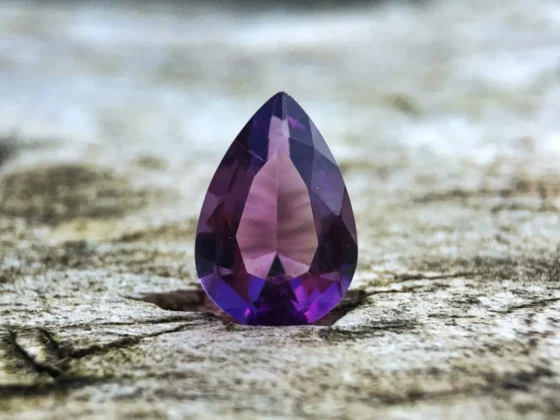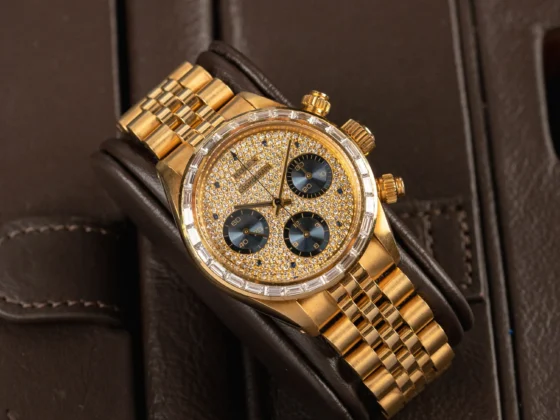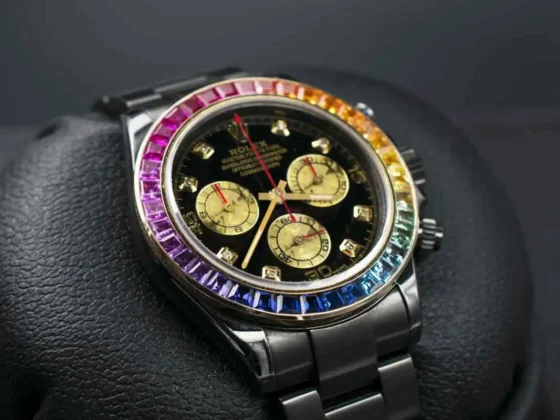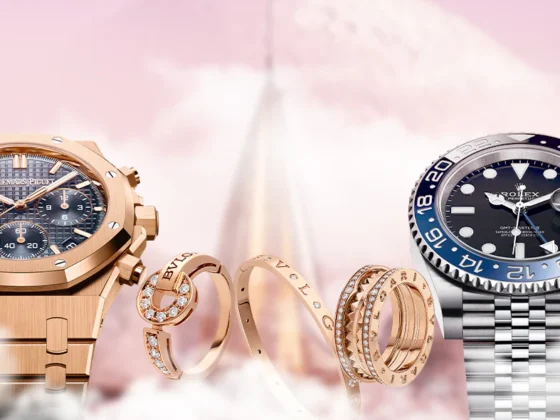For many collectors, luxury timepieces and high-end jewelry are not just aesthetically beautiful pieces—they are also financial assets that can appreciate significantly over time. While the intrinsic value of these items comes from their craftsmanship, history, and exclusivity, understanding their investment potential requires a nuanced approach. In this guide, we will explore how to assess the investment value of rare watches and jewelry, what factors influence their long-term value, and how collectors can strategically invest in these luxury assets.
Why Invest in Rare Timepieces and Jewelry?
Investing in rare watches and jewelry offers a unique blend of passion and financial opportunity. Collectors are drawn to these items not only for their exquisite design but also for their ability to hold and grow in value. The market for high-end watches and jewelry has shown consistent growth over the past few decades, with certain pieces fetching record-breaking prices at auctions.
Some of the reasons why collectors invest in luxury timepieces and jewelry include:
- Store of value: Unlike stocks or bonds, tangible assets like watches and jewelry have an intrinsic value based on materials and craftsmanship.
- Appreciation potential: Iconic timepieces and rare jewelry can significantly increase in value over time, especially if they have limited production runs or historical significance.
- Hedging against inflation: Collecting tangible assets can offer protection during periods of economic uncertainty or inflation.
Factors That Influence the Investment Value of Timepieces
1. Brand Prestige
Brand recognition plays a significant role in the investment value of a luxury watch. Renowned brands like Maison Designers, Patek Philippe, Rolex, and Audemars Piguet have established themselves as symbols of prestige and craftsmanship. These brands are known for producing iconic models that consistently appreciate in value due to their superior quality, heritage, and exclusivity.
2. Rarity and Limited Production
The rarity of a timepiece often drives its value. Watches that are produced in limited numbers or have unique features (such as special complications or custom designs) are typically more sought after by collectors. For example, limited-edition models or pieces discontinued by the manufacturer tend to see their values skyrocket on the secondary market.
3. Condition and Provenance
A watch’s condition is crucial in determining its investment potential. Timepieces in excellent, unworn condition or those that have been meticulously maintained can command higher prices. Additionally, watches with a documented history or connection to a significant individual or event (provenance) often carry a premium.
4. Complications and Technical Innovations
Complexity adds value. Watches with intricate complications, such as perpetual calendars, minute repeaters, or tourbillons, are considered technical masterpieces and often increase in value more rapidly. Collectors value technical innovation and horological mastery, which drives demand for these complicated timepieces.
Factors That Influence the Investment Value of Jewelry
1. Quality of Gemstones and Materials
The quality and rarity of the materials used in a piece of jewelry are among the most important factors in determining its value. Gemstones like diamonds, sapphires, rubies, and emeralds are prized for their rarity, and their value is influenced by factors such as cut, clarity, color, and carat weight. For example, high-carat diamonds with excellent clarity and no visible flaws can appreciate significantly over time.
2. Craftsmanship and Design
Jewelry created by master artisans or famed luxury houses such as Cartier, Van Cleef & Arpels, or Maison Designers carries a premium due to the exceptional craftsmanship involved. Unique or custom designs, particularly those from celebrated jewelers, tend to retain and appreciate in value over the years.
3. Cultural or Historical Significance
Jewelry pieces with historical or cultural importance often command higher prices at auctions. For example, jewelry once owned by royalty or celebrities, or pieces that have a strong connection to a specific time period or movement, tend to appreciate more quickly.
4. Vintage vs. Contemporary
Both vintage and contemporary jewelry pieces can be valuable investments, but they appreciate differently. Vintage jewelry often has historical significance and a charm that modern pieces may lack, while contemporary designs can benefit from cutting-edge craftsmanship and design trends.
How to Maximize the Investment Potential of Your Collection
1. Do Your Research
Successful collectors invest time in researching the market. This includes studying historical auction results, understanding current market trends, and following brand performance. By keeping up with the luxury watch and jewelry markets, you can make more informed decisions when adding new pieces to your collection.
2. Buy What You Love
While investment potential is important, it’s also crucial to buy pieces you genuinely love. The joy of owning and wearing a rare timepiece or exquisite piece of jewelry is an intrinsic part of the collecting experience. When personal passion intersects with financial opportunity, the investment becomes even more fulfilling.
3. Diversify Your Collection
Just like in any other investment portfolio, diversification can help reduce risk. Collect a mix of watches and jewelry, vintage and contemporary pieces, and items from different brands or periods. This strategy ensures that your collection remains valuable and well-rounded over time.
4. Keep Your Pieces in Excellent Condition
Maintaining your collection is essential to preserving and growing its value. For watches, this includes regular servicing and cleaning, while for jewelry, proper storage and occasional professional cleaning are crucial. Collectors should also keep original boxes, paperwork, and certificates of authenticity to maximize resale value.
Conclusion
The investment potential of rare timepieces and jewelry can be significant when approached with the right knowledge and strategy. By understanding the factors that influence the value of these luxury items—such as brand prestige, rarity, quality, and historical significance—collectors can build portfolios that not only bring them joy but also offer financial rewards over time. Whether you’re an experienced investor or just beginning your collection, rare watches and jewelry present a unique and rewarding opportunity in the luxury market.





